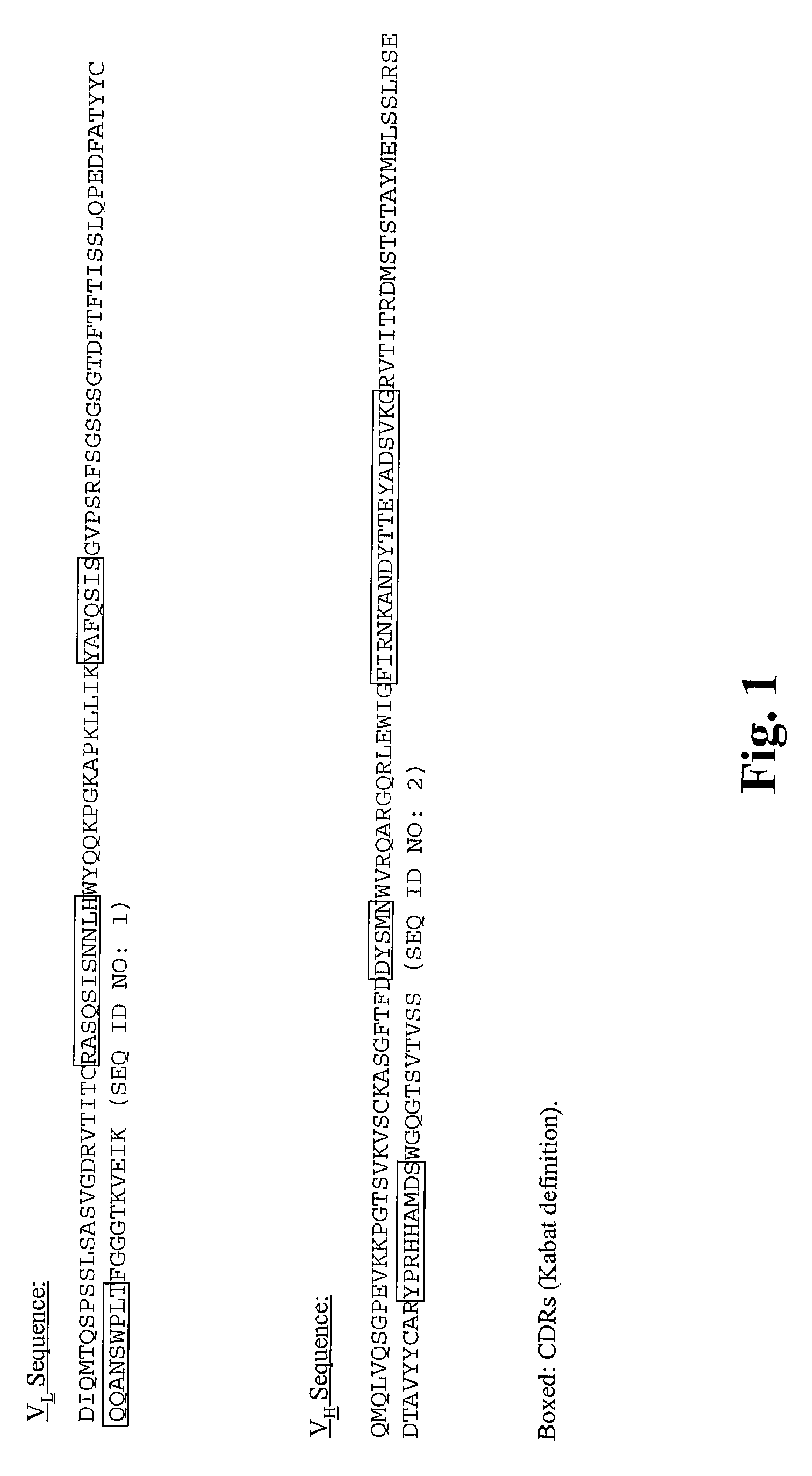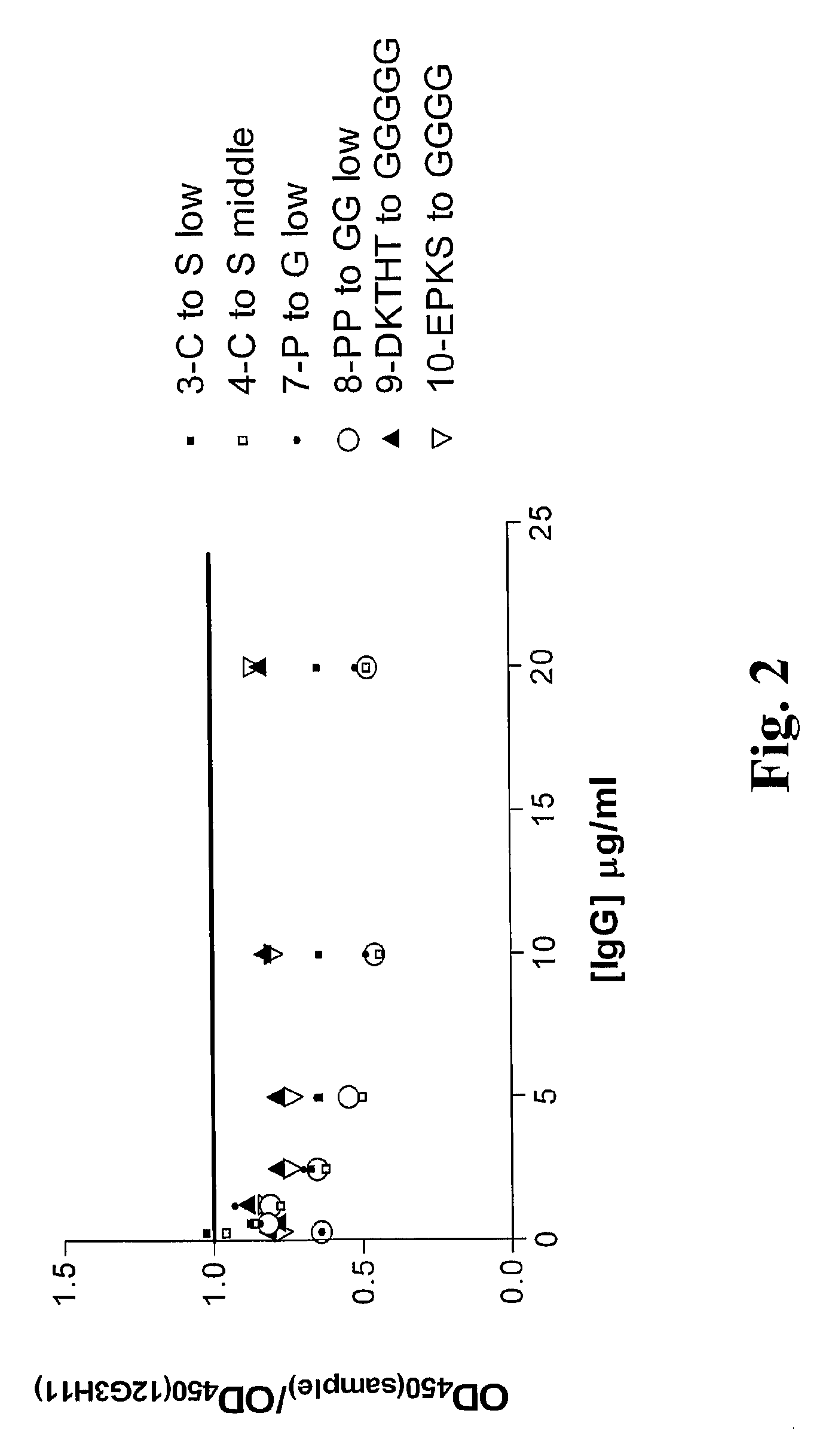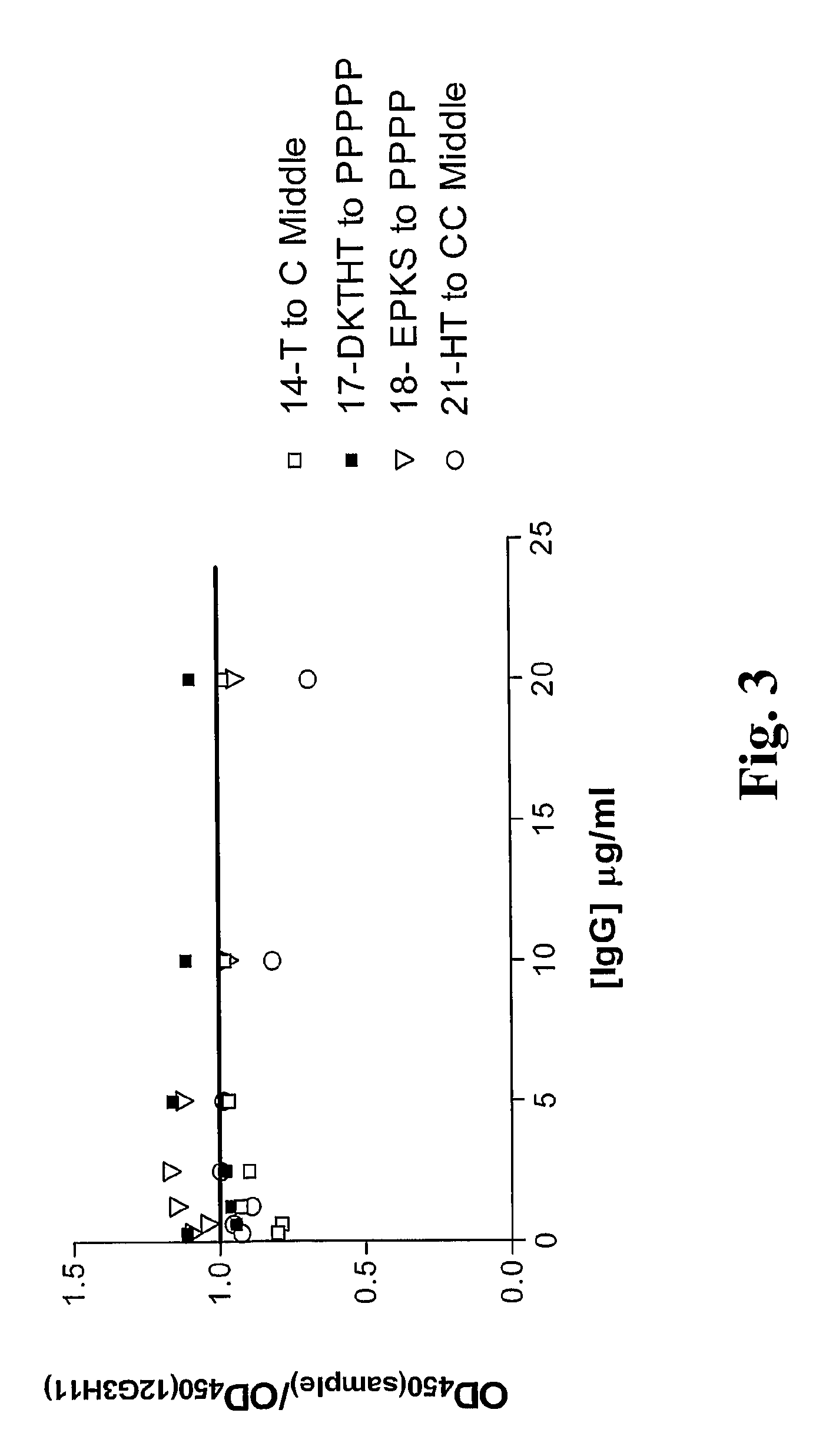Modulation of antibody effector function by hinge domain engineering
a technology of hinge domain and antibody effector, applied in the field of molecules, can solve the problems of more destruction, difficult interpretation and extrapolation of previous studies, and unoptimized antibodies for clinic use, and achieve the effects of enhancing the prophylactic or therapeutic effect of fc variants, preventing, managing, and treating one or more symptoms
- Summary
- Abstract
- Description
- Claims
- Application Information
AI Technical Summary
Benefits of technology
Problems solved by technology
Method used
Image
Examples
embodiment 1
[0296]2. The polypeptide of embodiment 1, wherein the modified hinge has increased flexibility, relative to a polypeptide having the same amino acid sequence except having a wild type hinge.
[0297]3. The polypeptide of embodiment 1 or 2, wherein the modified hinge comprises at least one amino acid substitution.
embodiment 3
[0298]4. The polypeptide of embodiment 3, wherein the modified hinge comprises at least one amino acid substitution at one or more positions selected from the group consisting of: E216, P217, K218, S221, D(no EU number, Kabat number 234), K222, T223, H224, T225, C226, P227, P228, C229 and P230, utilizing the EU index numbering system set forth in Kabat except where indicated.
[0299]5. The polypeptide of embodiment 3, wherein the modified hinge comprises at least one amino acid substitution selected from the group consisting of: E216G, E216A, P217G, P217A, K218G, K218A, S221G, S221A, D(no EU number, Kabat number 234)G, D(no EU number, Kabat number 234)A, K222G, K222A, T223G, T223A, H224G, H224A, T225G, T225A, C226S, C226T, P227G, P227A, P228G, P228A, C229S, C229T, P230G and P230A, utilizing the EU index numbering system set forth in Kabat except where indicated.
[0300]6. The polypeptide of embodiment 3, 4 or 5, wherein the modified hinge comprises at least one amino acid substitution s...
embodiment 9
[0316]10. The polypeptide of embodiment 9, wherein the modified hinge comprises at least one amino acid substitution at one or more positions selected from the group consisting of: E216, K218, S221, D(no EU number, Kabat number 234), K222, T223, H224, and T225,
utilizing the EU index numbering system set forth in Kabat except where indicated.
[0317]11. The polypeptide of embodiment 9, wherein the modified hinge comprises at least one amino acid substitution selected from the group consisting of: E216P, K218P, S221P, D(no EU number, Kabat number 234)P, K222P, T223P, T223C, H224P, H224C and T225P, T225C, utilizing the EU index numbering system set forth in Kabat except where indicated.
[0318]12. The polypeptide of embodiment 9, wherein the modified hinge comprises at least one amino acid substitution selected from the group consisting of:[0319](a) T223C;[0320](b) H224C and T225C;[0321](c) D(no EU number, Kabat number 234)P, K222P, T223P, H224P and T225P; and[0322](d) E216P, K218P and S22...
PUM
| Property | Measurement | Unit |
|---|---|---|
| Tm | aaaaa | aaaaa |
| Tm | aaaaa | aaaaa |
| Tm | aaaaa | aaaaa |
Abstract
Description
Claims
Application Information
 Login to View More
Login to View More - R&D
- Intellectual Property
- Life Sciences
- Materials
- Tech Scout
- Unparalleled Data Quality
- Higher Quality Content
- 60% Fewer Hallucinations
Browse by: Latest US Patents, China's latest patents, Technical Efficacy Thesaurus, Application Domain, Technology Topic, Popular Technical Reports.
© 2025 PatSnap. All rights reserved.Legal|Privacy policy|Modern Slavery Act Transparency Statement|Sitemap|About US| Contact US: help@patsnap.com



